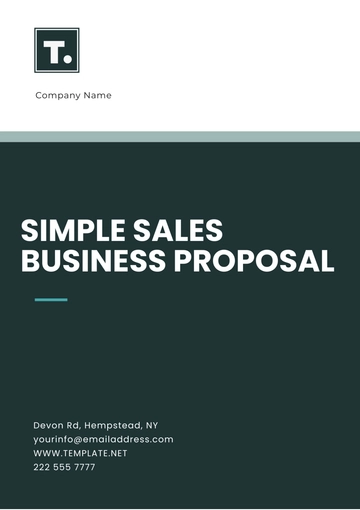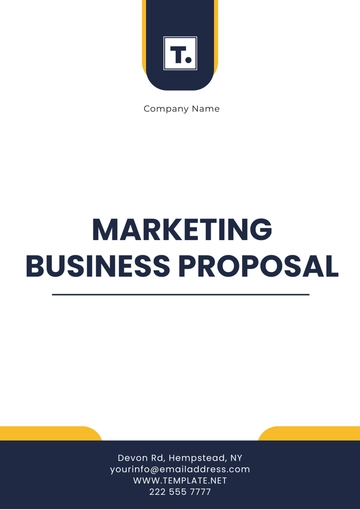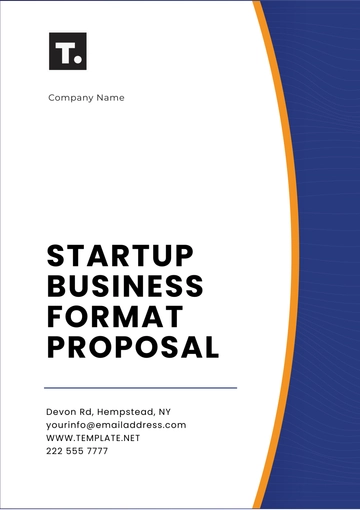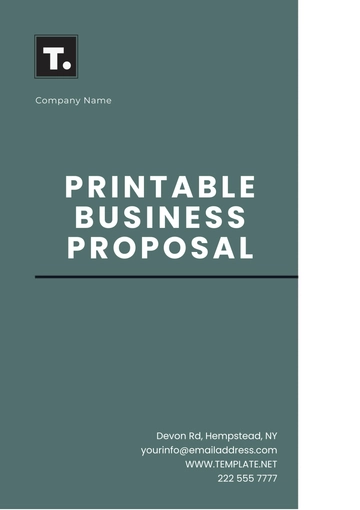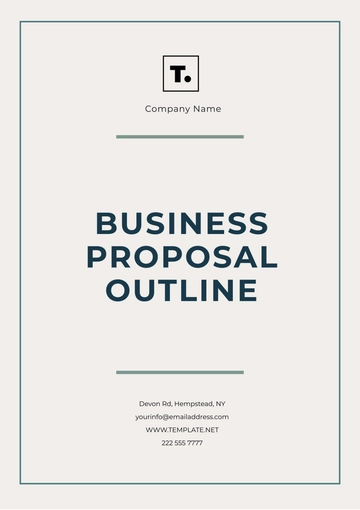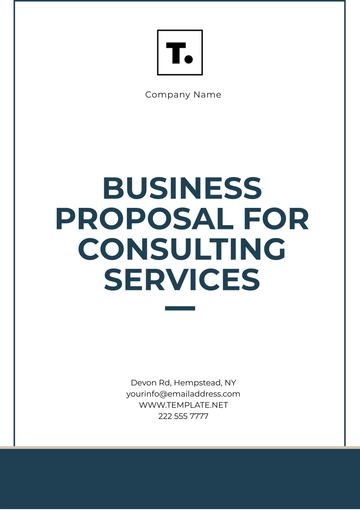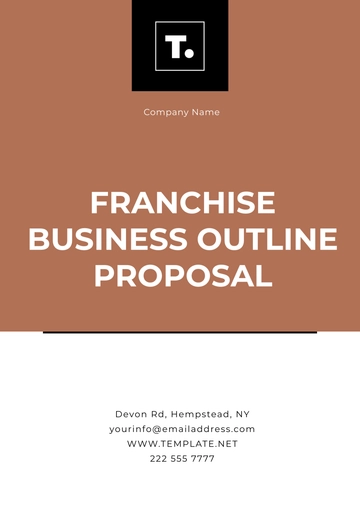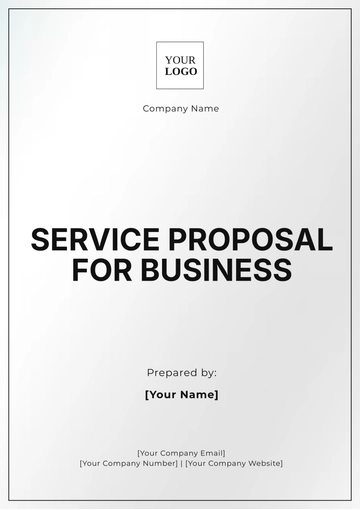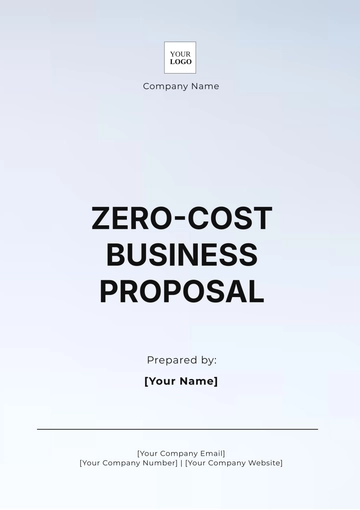Free Sample Commercial Business Proposal
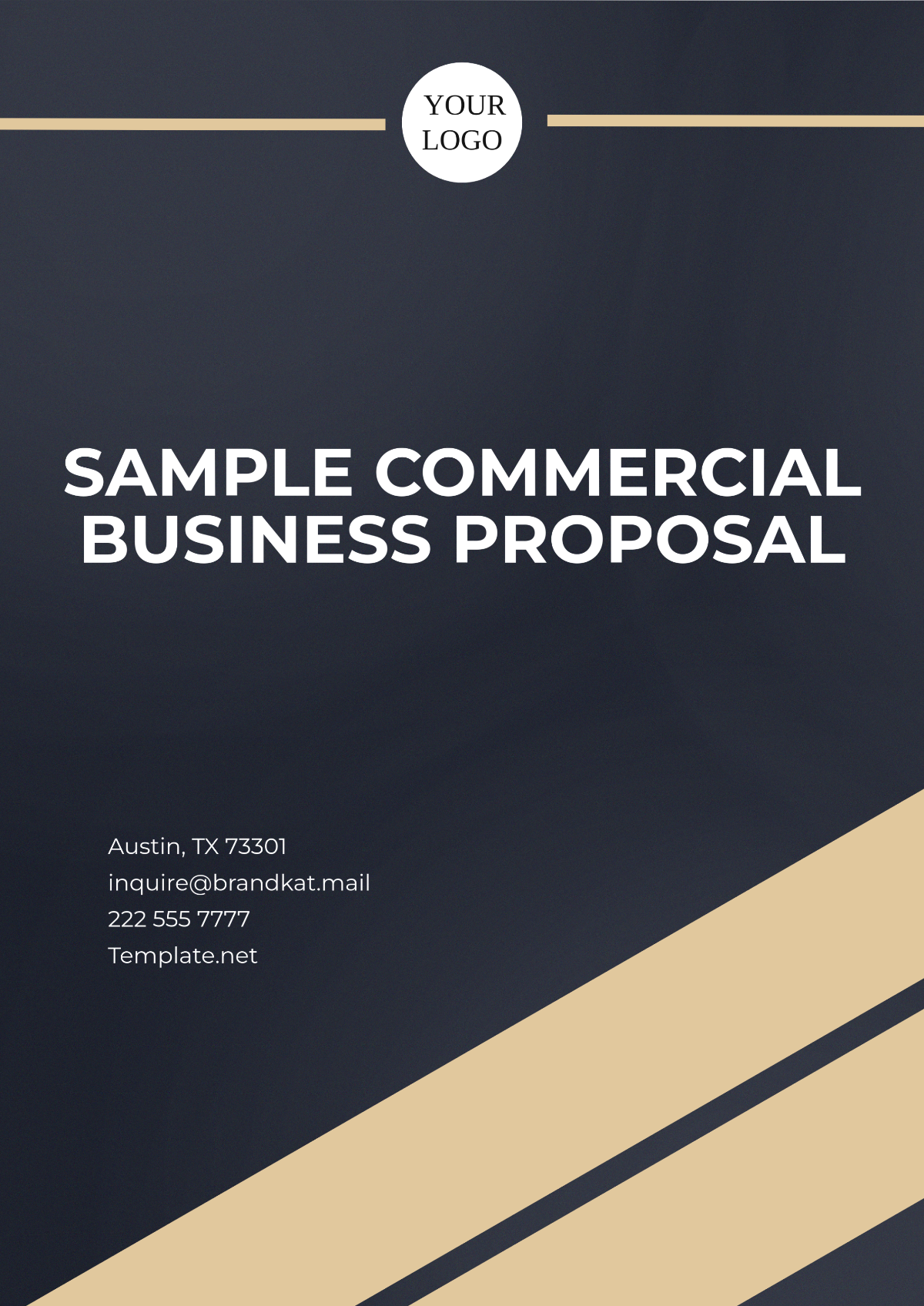
Prepared By: [Your Name]
Date: January 1, 2060
I. Executive Summary
This business proposal outlines a strategic plan to enhance the commercial capabilities of [Your Company Name]. Our objective is to improve the company's competitive advantage and market position by deploying innovative marketing strategies, optimizing operational efficiencies, and expanding our product offerings. This proposal presents a comprehensive analysis of the existing market conditions, the company's current standing, and a detailed action plan designed to achieve sustainable growth and profitability.
II. Company Background
[Your Company Name] was founded in 2050 and has since established itself as a leading player in the consumer electronics industry. Our mission is to provide high-quality products that enhance our customers' lifestyles. With over 200 employees and a presence on three continents, [Your Company Name] continues to drive innovation through research and development, ensuring our products meet the highest standards of quality and customer satisfaction.
Vision and Mission
Our vision is to become the world's leading provider of consumer electronics, synonymous with innovation and quality. Our mission is to deliver superior products that enrich the lives of our customers while fostering a culture of excellence and responsibility.
III. Market Analysis
Our market analysis reveals a rapidly changing industry landscape characterized by technological advancements, increased competition, and evolving consumer preferences. The global consumer electronics market is projected to grow significantly over the next five years, driven by the proliferation of Internet of Things (IoT) devices, advancements in artificial intelligence, and the increasing demand for smart home products.
SWOT Analysis
Strengths | Weaknesses |
|---|---|
|
|
Opportunities | Threats |
|
|
IV. Proposed Strategies
A. Marketing Strategy
The primary objective of our marketing strategy is to strengthen brand awareness and expand our customer base. Key initiatives include:
Enhancing digital marketing efforts to target online consumers through social media and search engine optimization (SEO).
Launching promotional campaigns that emphasize product uniqueness and quality.
Establishing partnerships with influencers to reach a broader audience.
B. Operational Strategy
To improve operational efficiency and reduce costs, we propose the following actions:
Implementing lean manufacturing processes to streamline production and minimize waste.
Investing in automation technologies to enhance productivity.
Optimizing the supply chain by diversifying supplier networks and leveraging just-in-time inventory practices.
V. Financial Projections
Our financial projections are based on the implementation of the aforementioned strategies, forecasting a steady increase in revenue and profitability over the next five years. Below is a summary of our projected financial performance:
Year | 2060 | 2065 | 2070 | 2080 | 2090 |
|---|---|---|---|---|---|
Revenue (in millions) | 150 | 180 | 220 | 270 | 330 |
Net Profit (in millions) | 10 | 15 | 25 | 40 | 60 |
VI. Implementation Plan
Our implementation plan outlines a phased approach to deploying the proposed strategies over a period of 12 months. This plan includes specific milestones, responsible parties, and key performance indicators (KPIs) to monitor progress and ensure alignment with organizational objectives.
A. Phase 1: Foundation
Duration: 0-3 months
Conduct market research to refine target customer profiles.
Establish key metrics and reporting structures.
Finalize strategic partnerships.
B. Phase 2: Execution
Duration: 4-9 months
Roll out digital marketing initiatives.
Begin implementation of lean manufacturing processes.
Launch new product lines focusing on sustainability.
C. Phase 3: Optimization
Duration: 10-12 months
Evaluate performance against KPIs and adjust strategies as needed.
Conduct a comprehensive review of operational efficiencies.
Expand successful initiatives into new markets.
VII. Conclusion
In conclusion, this proposal presents a robust framework for [Your Company Name] to leverage its strengths and capitalize on growth opportunities in the consumer electronics market. Through strategic marketing, operational enhancements, and prudent financial management, we are poised to achieve our objectives and deliver value to our stakeholders.
- 100% Customizable, free editor
- Access 1 Million+ Templates, photo’s & graphics
- Download or share as a template
- Click and replace photos, graphics, text, backgrounds
- Resize, crop, AI write & more
- Access advanced editor
Present your business effectively with this Sample Commercial Business Proposal Template from Template.net. This fully editable and customizable template is tailored for commercial proposals, making it easy to personalize. Easily editable in our Ai Editor Tool, this template streamlines your business proposal creation for a professional and polished presentation.
You may also like
- Business Proposal
- Research Proposal
- Proposal Request
- Project Proposal
- Grant Proposal
- Photography Proposal
- Job Proposal
- Budget Proposal
- Marketing Proposal
- Branding Proposal
- Advertising Proposal
- Sales Proposal
- Startup Proposal
- Event Proposal
- Creative Proposal
- Restaurant Proposal
- Blank Proposal
- One Page Proposal
- Proposal Report
- IT Proposal
- Non Profit Proposal
- Training Proposal
- Construction Proposal
- School Proposal
- Cleaning Proposal
- Contract Proposal
- HR Proposal
- Travel Agency Proposal
- Small Business Proposal
- Investment Proposal
- Bid Proposal
- Retail Business Proposal
- Sponsorship Proposal
- Academic Proposal
- Partnership Proposal
- Work Proposal
- Agency Proposal
- University Proposal
- Accounting Proposal
- Real Estate Proposal
- Hotel Proposal
- Product Proposal
- Advertising Agency Proposal
- Development Proposal
- Loan Proposal
- Website Proposal
- Nursing Home Proposal
- Financial Proposal
- Salon Proposal
- Freelancer Proposal
- Funding Proposal
- Work from Home Proposal
- Company Proposal
- Consulting Proposal
- Educational Proposal
- Construction Bid Proposal
- Interior Design Proposal
- New Product Proposal
- Sports Proposal
- Corporate Proposal
- Food Proposal
- Property Proposal
- Maintenance Proposal
- Purchase Proposal
- Rental Proposal
- Recruitment Proposal
- Social Media Proposal
- Travel Proposal
- Trip Proposal
- Software Proposal
- Conference Proposal
- Graphic Design Proposal
- Law Firm Proposal
- Medical Proposal
- Music Proposal
- Pricing Proposal
- SEO Proposal
- Strategy Proposal
- Technical Proposal
- Coaching Proposal
- Ecommerce Proposal
- Fundraising Proposal
- Landscaping Proposal
- Charity Proposal
- Contractor Proposal
- Exhibition Proposal
- Art Proposal
- Mobile Proposal
- Equipment Proposal
- Student Proposal
- Engineering Proposal
- Business Proposal




